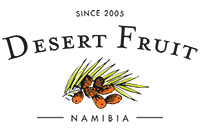Trees, Production & Varieties
A full grown date palm tree can reach 82 feet (25 meters) in height, with a spreading crown of greenish leaves. Trees can yield dates for up to 60 years. The date fruit grows in heavy clusters suspended under the leaves. Date trees come into production after 5 years and reach full potential around the 9th year after transplanting.
Desert Fruit has 22,000 date palms of varying ages. In full production the 5 varieties of date palms will produce a total of 2,500 tons export quality date fruit.
Desert Fruit currently exports five varieties of dates. They include:
Originally from Morocco, Medjool dates are priced for their large size, chewy texture and extraordinary sweetness. Medjool dates are oblong in shape, and eaten at the Rutab (ripe, soft) and Tamr (ripe, sun dried) stages.Fully mature Medjool date trees can yield 70-100 kilos of fresh (Tamr) dates per year. Desert Fruit sells Medjool dates at the rutab and tamr stages.
Originally from Saudi Arabia, the name means “super Khalas (date).” Zamli dates are oval in shape, and are eaten at all three stages of ripeness. Fully mature Zamli date trees can yield 250-300 kilos of fresh (Khalal) dates per year. Desert Fruit sells Zamli dates at the rutab and tamr stage.
Originally from Iraq, the name means “a hot summer wind of Basrah.” Barhi dates are round/oval in shape, and are eaten at the Khalal stage (ripe, crunchy). Fully mature Barhi date trees can yield between 200-300 kilos of fresh (Khalal) dates per year. Desert Fruit sells Barhi dates at both the khalal and rutab stages.
Originally from Saudi Arabia, Khalas means “quintessence, or the ideal.” Khalas dates are oblong in shape and are eaten at the Tamr stage (ripe, sun dried). Fully mature Khalas date trees can yield up to 150-200 kilos of fresh (Khalal) dates per year. Desert Fruit sells Khalas dates at the tamr stage.
Originally from Iraq, the name means “mother of fat.” Um Ed Dahan dates are oval in shape, and eaten at all three stages of ripeness. Fully mature Dahan date trees can yield 150-200 kilos of fresh (Khalal) dates per year. Desert Fruit sells Um Ed Dahan dates at the rutab stage.

Medjool
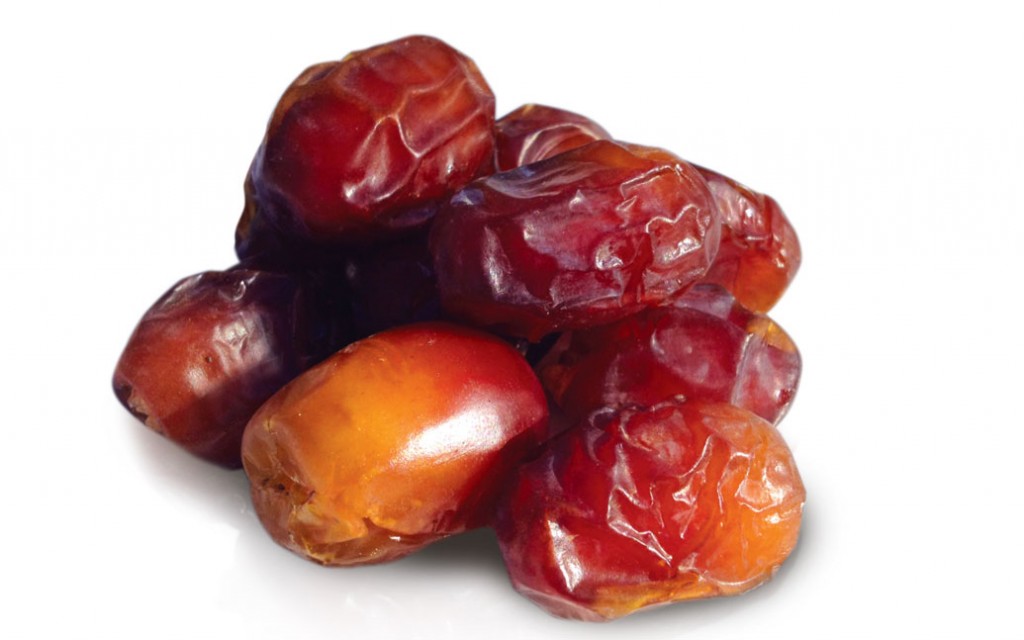
Zamli
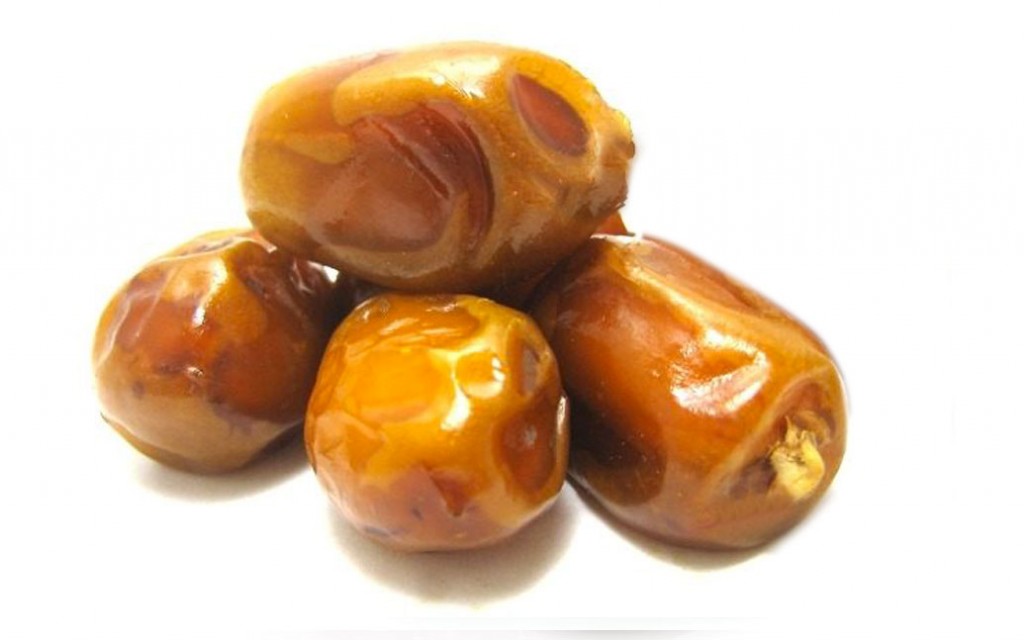
Bahri
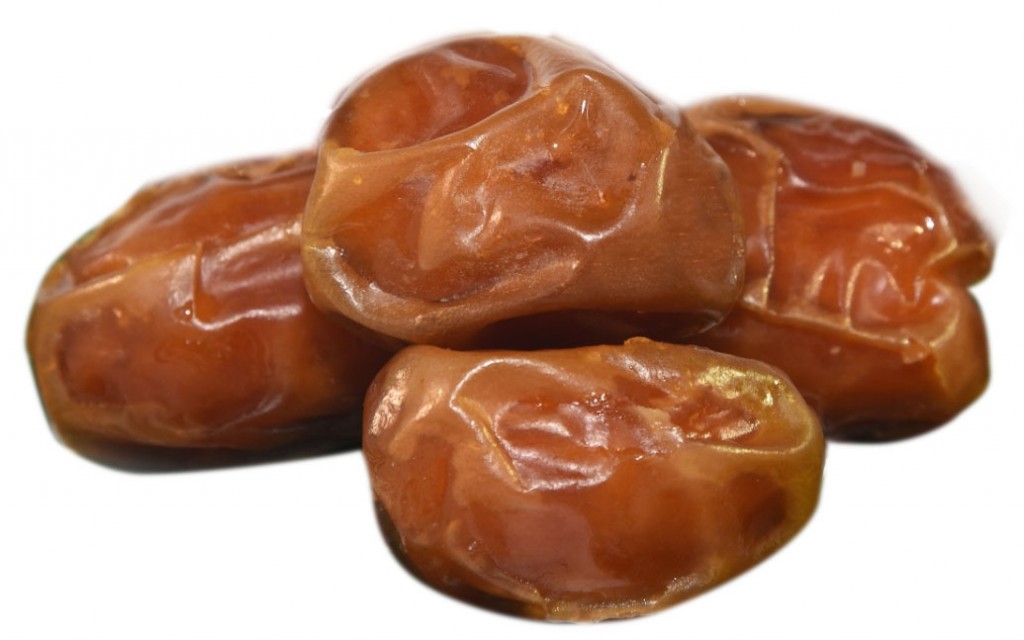
Khalas
The agricultural date calendar for Desert Fruit is as follows:
| May – June | July | August | Sep – Dec | Jan – Feb | March – May |
|---|---|---|---|---|---|
| Flowers Forming | Flowering & Pollination | Fruit Set | Fruit Growth | Ripening | Harvesting, Packing & Exporting |
Ideal Production Conditions
Date palms are cultivated in arid and semi-arid regions which are characterised by long and hot summers, no (or at most low) rainfall and very low relative humidity level during the ripening period. Exceptionally high temperatures (± 56°C) are well endured by a date palm for several days under irrigation. During winter, temperatures below 0°C are also endured (A. Zaid, 2002). The location of Desert Fruit farms is therefore ideal for date production, providing the potential to produce high quality dates comparable to or better than those produced in Israel.
When the dates are not yet ripe, it is described as kimri. There are three very distinct phases of ripeness:
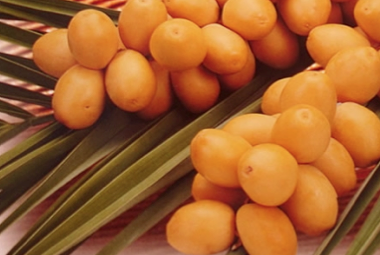 |
At the Khalal stage the dates are mature, hard and crisp. The moisture content is 50-85%, and the dates are bright yellow or red in colour. At this stage, they are perishable and must be refrigerated. |
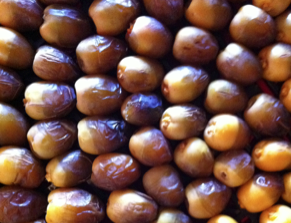 |
At the Rutab stage dates are changing from yellow to partially browned and getting softer. The moisture content is usually between 30-45%. At this stage they are perishable and must be refrigerated. |
 |
At the Tamr stage, the colour of the dates ranges from amber to dark brown. The moisture content is between 10-25%. The texture is from soft and pliable to firm. Protected from insects, tamr stage dates can be kept without special precautions over longer periods. |
